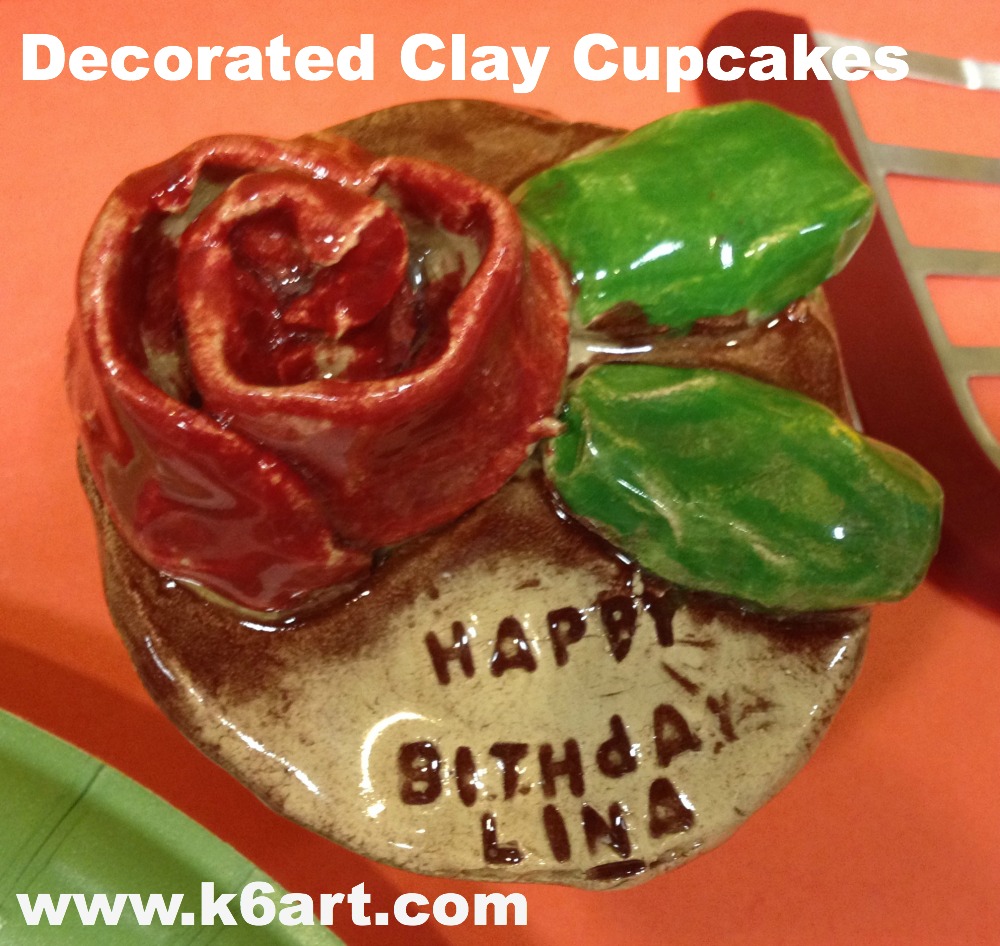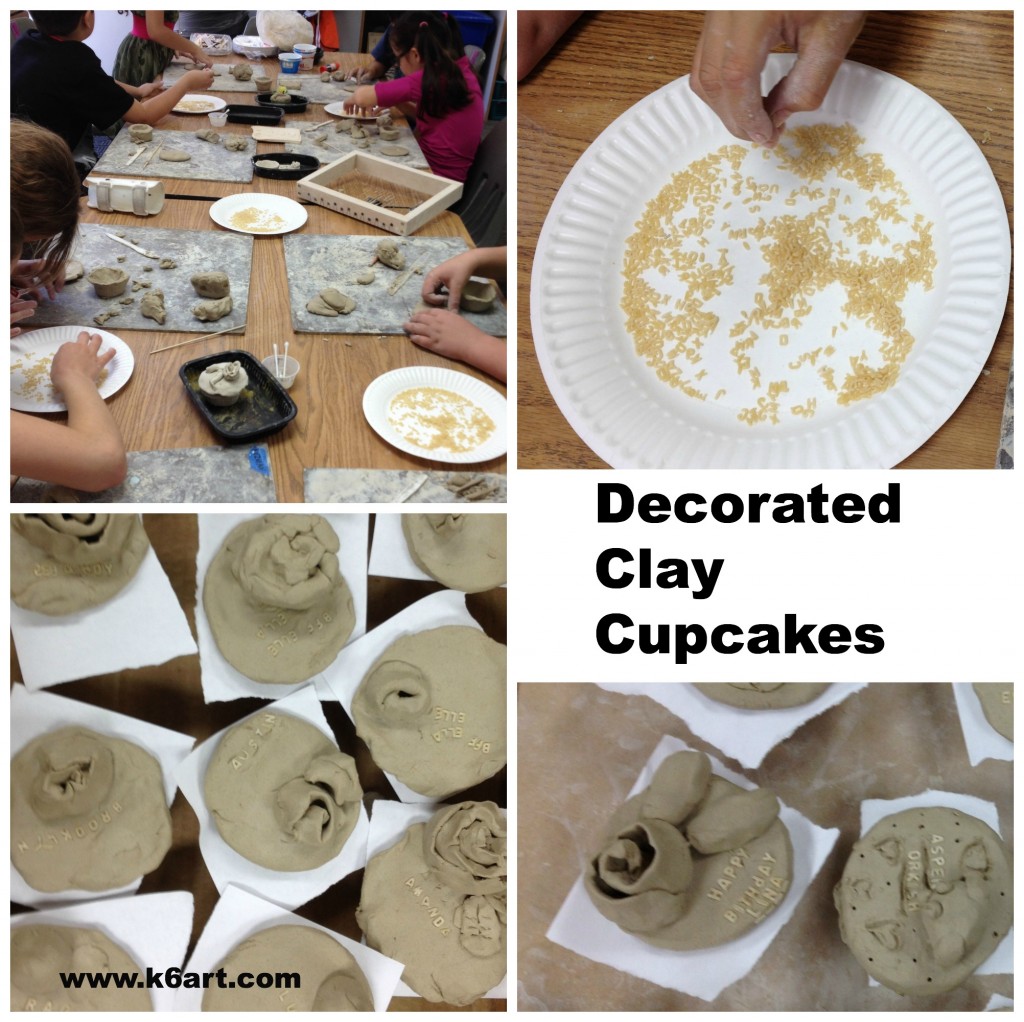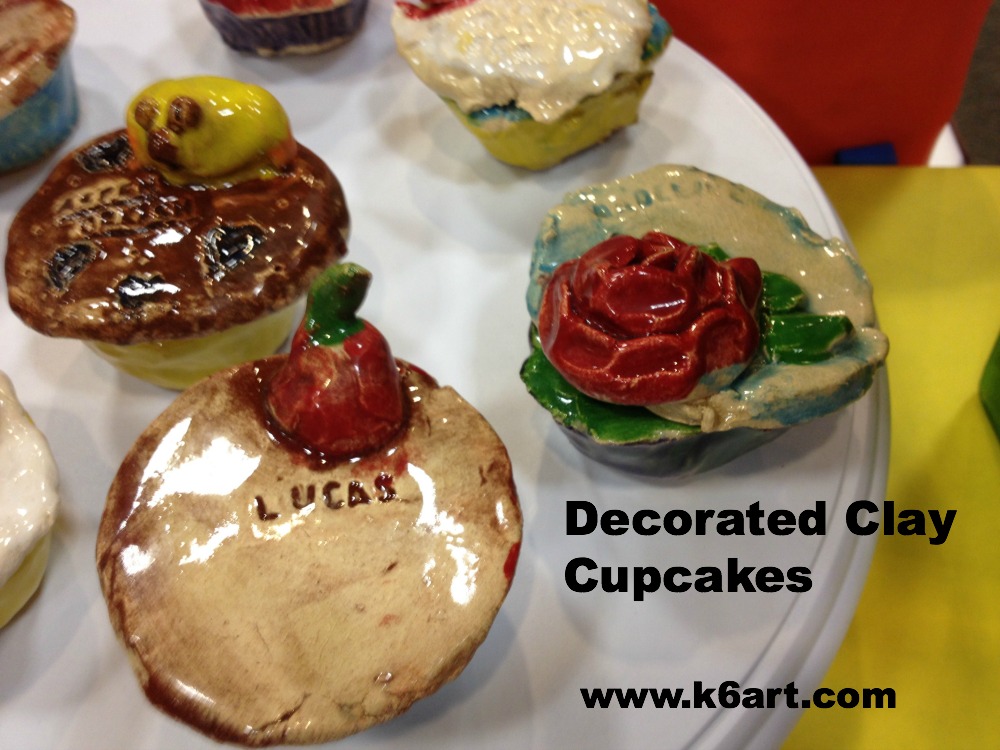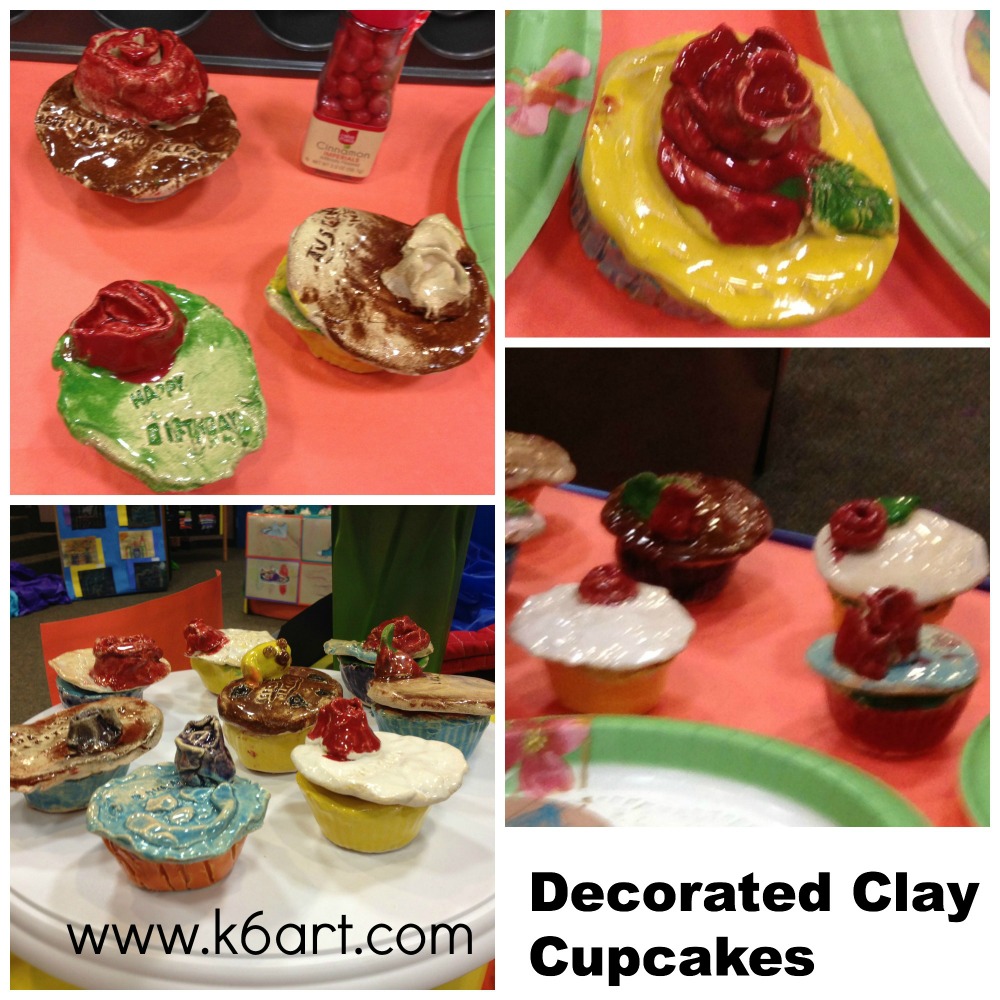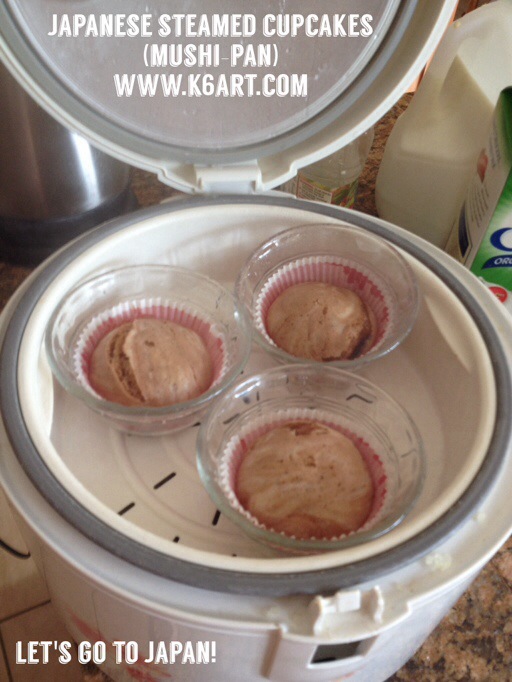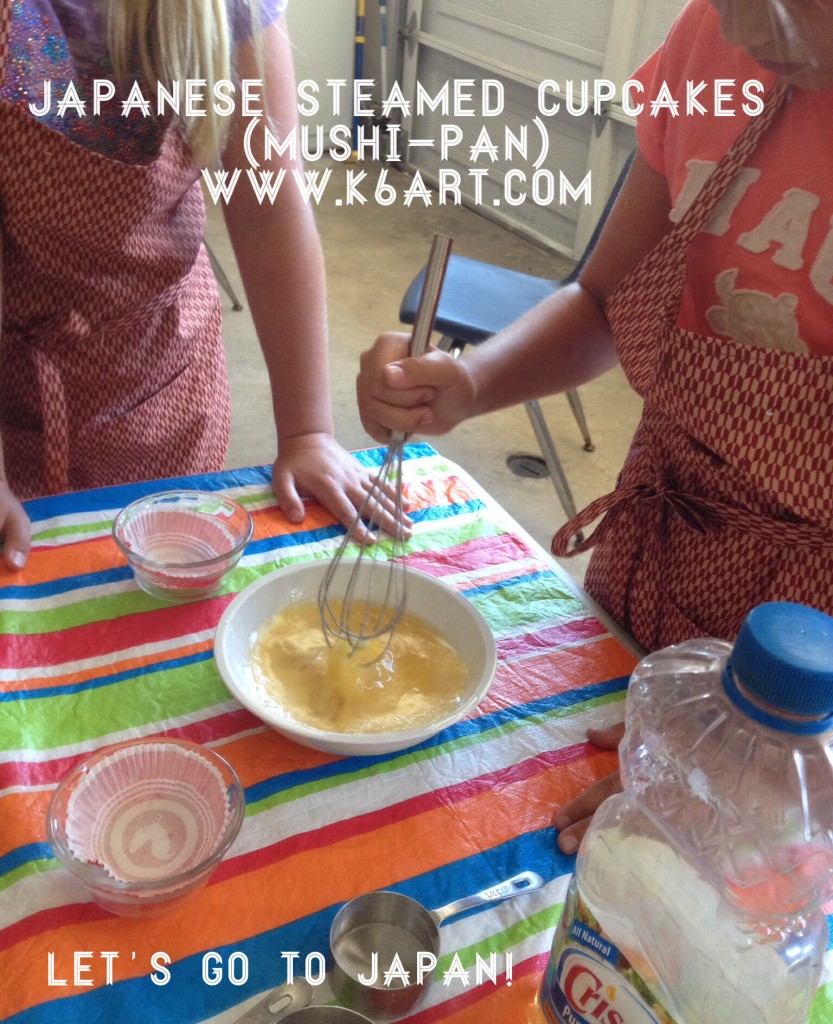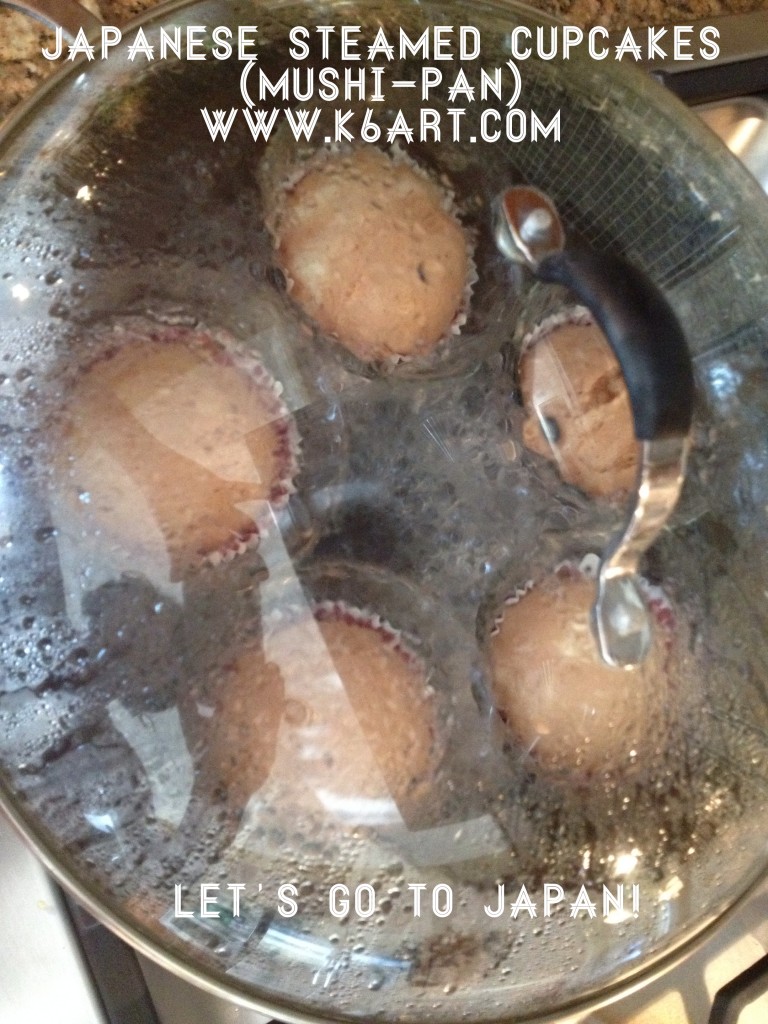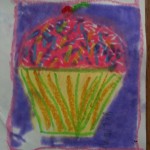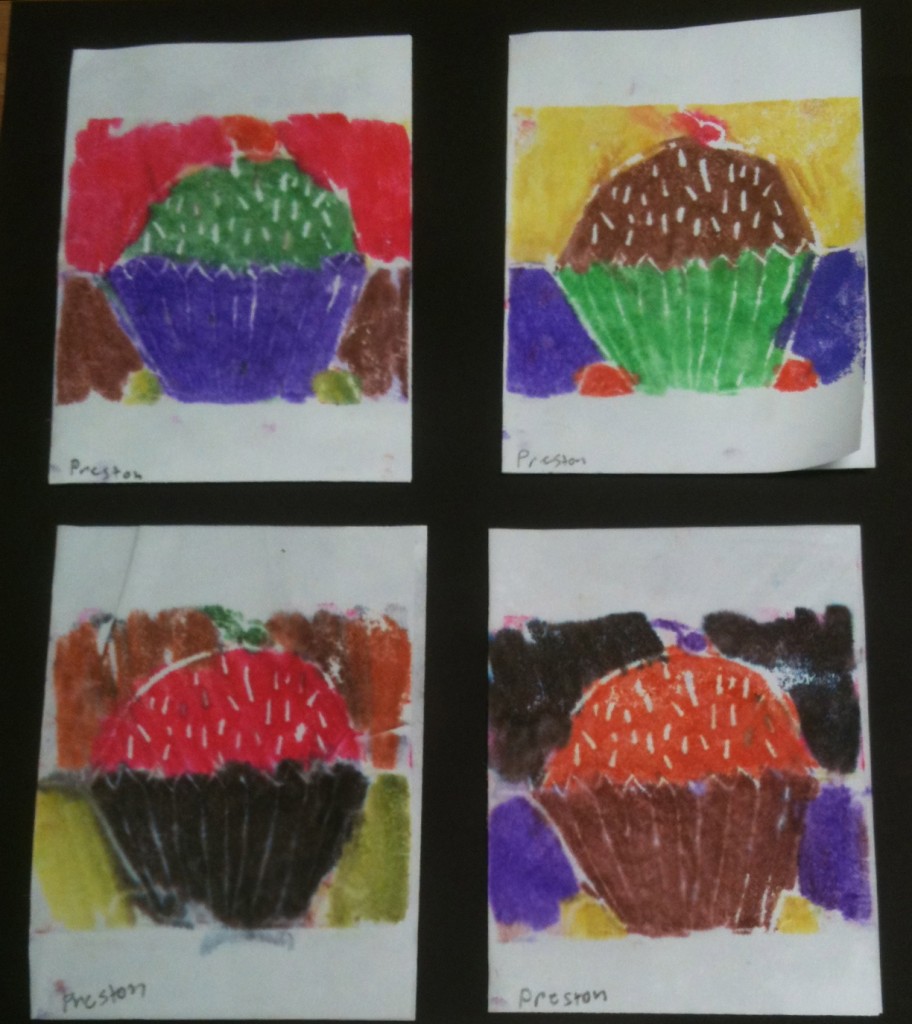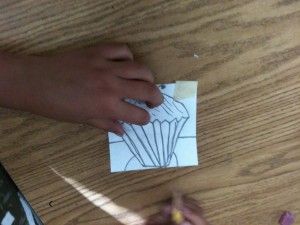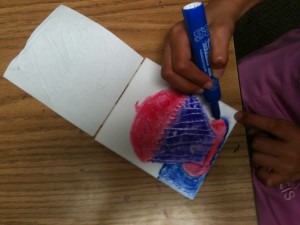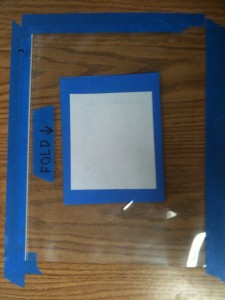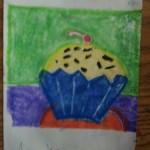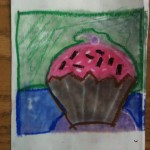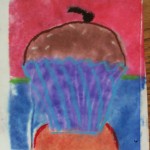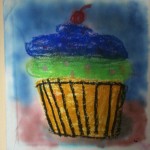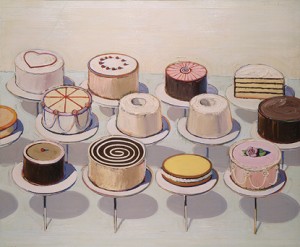These lidded clay cupcake boxes are extra-special: they feature lettering and clay roses!
Materials:
- clay (we used low-fire white)
- individual silicone cupcake molds (such as Wilton Silicone Baking Cups
) - pin tool or plastic knife.
- white vinegar
- q-tips
- alphabet pasta (I use La Moderna brand from the Hispanic food section at Wal Mart).
- underglaze
- clear glaze
Make the cupcake base
Give each student a lump of clay and a silicone cupcake form. Create a pinch pot, place it in the silicone form and press the clay all around against the textured sides of the form. If the clay pot is higher than the form, trim the clay with a pin tool or plastic knife. Turn form inside out and remove from clay. Students should write their name on the bottom at this time.
Make the cupcake lid
Take some more clay and roll into a ball. Flatten the ball. Invert the top of the cupcake form and place onto of the flattened clay. Trim clay to fit cupcake form. Write student name on one side of the lid.
Want more tips? Check out this clay cupcake post from The Art of Ed.
Adding roses
I saw this great post on making simple clay roses on the smART Class blog. Essentially, you create a coil (rope) of clay, lay it on the table, pinch the top (‘spine’) along the length of the coil, and spiral into a rose. Please see the smART Class blog post for a full photo tutorial.
We attached our roses (and optional leaves) to the lid using vinegar applied with a q-tip. Some students skipped the roses and added other decorations. Variations included a sun, animal, wrapped present, and cherry.
(Note: vinegar is our glue. We use it instead of slip when attaching small clay objects).
Adding text
Pour some alphabet pasta into a plate. Press alphabet pasta into wet clay. Write a birthday message or anything else. Do not remove (the pasta will burn out in the kiln).
Fire to cone 04.
Glaze the cupcake
Glaze the base with three coats of underglaze.
If the lid has text, use a stiff brush to press a dark color of underglaze into text indentations. Wipe off the underglaze. The text should now be legible. Carefully glaze the roses/leaves/decorations with three coats of underglaze. When dry, add 2-3 coats of clear glaze. Fire to cone 06.
Enjoy!
p.s. This would be a nice Wayne Thiebaud lesson!

